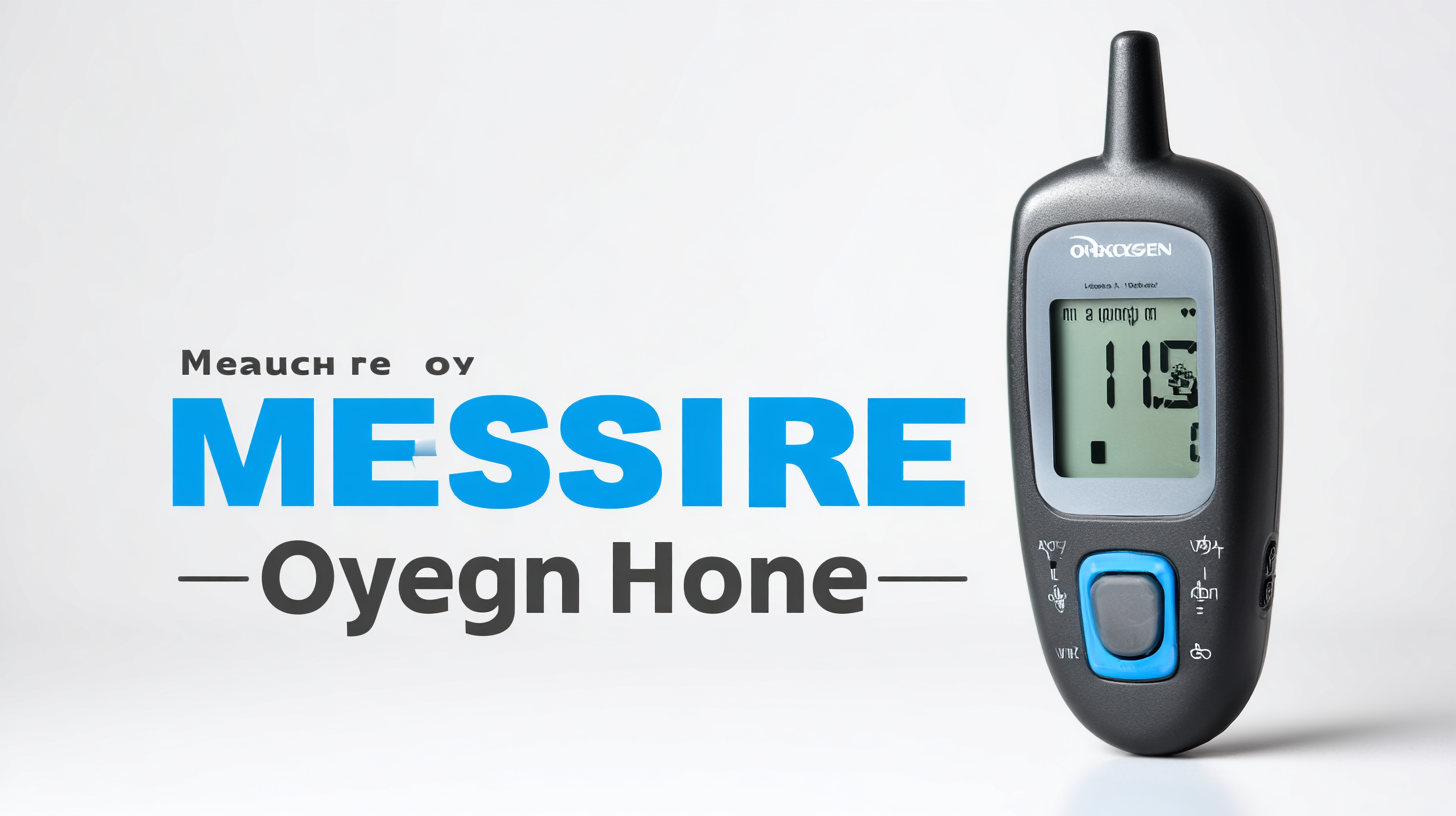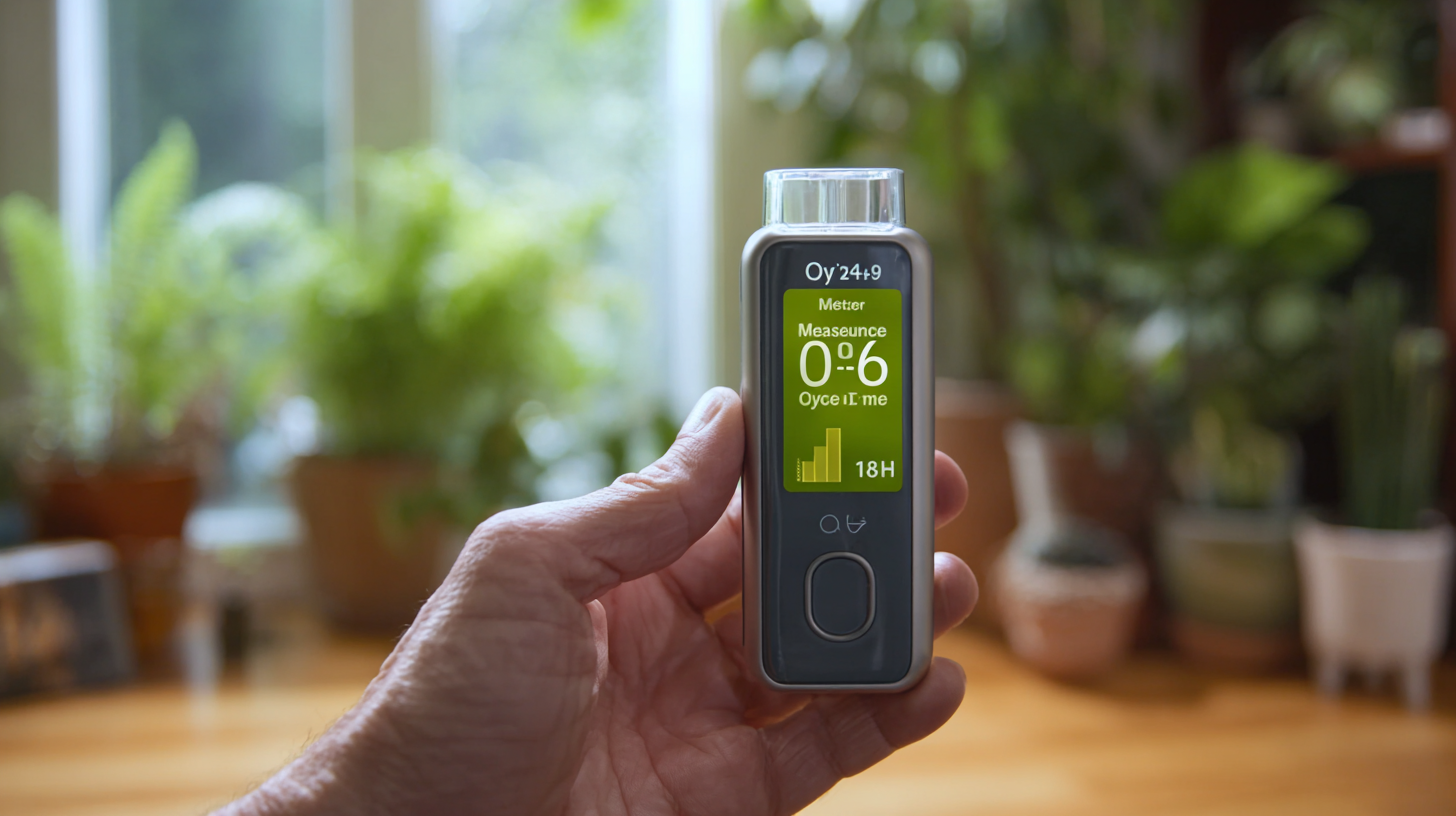What is the Most Effective Way to Measure Oxygen Levels in Your Home
 Measuring oxygen levels in our homes is an often-overlooked yet crucial aspect of maintaining a healthy indoor environment. According to the World Health Organization, optimal indoor air quality is essential for overall well-being, with oxygen levels typically ranging from 19.5% to 23.5%. This highlights the importance of implementing effective measures to monitor and enhance oxygen levels.
Measuring oxygen levels in our homes is an often-overlooked yet crucial aspect of maintaining a healthy indoor environment. According to the World Health Organization, optimal indoor air quality is essential for overall well-being, with oxygen levels typically ranging from 19.5% to 23.5%. This highlights the importance of implementing effective measures to monitor and enhance oxygen levels.
The rise of energy-efficient homes has led to increased concerns over indoor air quality, as sealed environments can trap pollutants and reduce oxygen concentration. As data from the U.S. Environmental Protection Agency suggests, poor indoor air quality can lead to various health issues, emphasizing the need for accurate and reliable methods to measure oxygen levels.
In this blog, we will explore the most effective ways to measure oxygen levels at home, ensuring a safe and comfortable living space for you and your family.
Understanding the Importance of Measuring Oxygen Levels in Your Home
Understanding the importance of measuring oxygen levels in your home is crucial for maintaining a healthy living environment. Oxygen is vital for our overall well-being, supporting respiratory functions and promoting energy levels. Low oxygen levels can lead to various health issues, including fatigue, cognitive decline, and even serious respiratory problems. Therefore, monitoring these levels helps ensure that your indoor air quality supports optimal health and productivity.
There are various methods to measure oxygen levels effectively. Utilizing an oxygen sensor or a portable oxygen meter can provide real-time readings of your home's atmospheric conditions. These devices are user-friendly and designed to alert you if oxygen levels fall below safe thresholds. Additionally, ensuring proper ventilation and incorporating indoor plants can help balance oxygen levels naturally, enhancing your home's overall air quality. Taking proactive measures not only safeguards your health but also fosters a more comfortable and rejuvenating living space.
What is the Most Effective Way to Measure Oxygen Levels in Your Home - Understanding the Importance of Measuring Oxygen Levels in Your Home
| Measurement Method | Accuracy (%) | Response Time (seconds) | Cost ($) | Recommended Use |
|---|---|---|---|---|
| Electrochemical Sensors | ±2 | 30 | 150 | Home use, portable devices |
| Optical Sensors | ±1 | 60 | 300 | Indoor air quality monitoring |
| Zirconia Sensors | ±1 | 120 | 400 | Continuous monitoring in stable environments |
| Chemical (Colorimetric) Sensors | ±3 | 45 | 100 | Occasional use, less sensitive |
| Portable Oxygen Meters | ±2 | 15 | 200 | Travel and field testing |
Common Sources of Oxygen Depletion in Residential Spaces
Maintaining adequate oxygen levels in your home is essential for a healthy living environment. One of the most common sources of oxygen depletion in residential spaces is the presence of indoor pollutants. According to the Environmental Protection Agency (EPA), indoor air can be 2 to 5 times more polluted than outdoor air. Sources such as gas stoves, fireplaces, and certain cleaning chemicals can contribute to reduced oxygen levels, as they consume oxygen during combustion or release harmful byproducts that can displace oxygen.
Another significant factor affecting oxygen levels is inadequate ventilation. Homes that are tightly sealed for energy efficiency can trap air pollutants and moisture, leading to poor air quality and lower oxygen concentrations. The American Society of Heating, Refrigerating and Air-Conditioning Engineers (ASHRAE) recommends ensuring proper ventilation to combat stagnant air and promote healthy oxygen levels. They suggest using exhaust fans in kitchens and bathrooms and regularly opening windows to allow fresh air in. By being mindful of these common sources of oxygen depletion and taking proactive measures, homeowners can significantly improve their indoor air quality.
Different Methods for Measuring Oxygen Levels and Their Effectiveness
When it comes to measuring oxygen levels in your home, several methods can be employed, each with varying degrees of effectiveness. One of the most common techniques is using a handheld pulse oximeter, which measures the oxygen saturation of hemoglobin in the blood. According to a study published in the Journal of Clinical Monitoring and Computing, these devices have an accuracy rate of over 90% in normal conditions, making them reliable for personal health monitoring. However, they only provide insight into oxygen levels in the blood and not directly the environmental conditions.
For a more comprehensive assessment, oxygen meters designed for indoor air quality can be used. These devices analyze the oxygen concentration in the ambient air and are particularly useful for ensuring a safe living environment, especially in spaces prone to high carbon dioxide levels. According to data from the Environmental Protection Agency (EPA), maintaining indoor air quality is crucial, as oxygen levels should ideally remain between 19.5% and 23.5%. Utilizing a dedicated indoor air quality monitor can provide real-time data, helping homeowners optimize air circulation and improve overall health safety.
Measuring Oxygen Levels in Your Home: Effectiveness of Different Methods
How to Choose the Right Oxygen Measurement Device for Your Needs
Choosing the right oxygen measurement device for your home is crucial for effectively monitoring your health. With the advancement of technology, a variety of options are available, from handheld devices to wearable technology like smartwatches. Smartwatches have gained attention as potential alternatives for measuring blood oxygen levels. These devices can monitor your oxygen saturation and alert you to significant changes, which encourages timely medical attention when needed.
When selecting an oxygen measurement device, consider the following tips: First, assess your specific needs—if you require continuous monitoring due to a medical condition, a dedicated pulse oximeter might be more suitable. For those who prefer convenience, a smartwatch offering blood oxygen monitoring could be a practical choice. Additionally, keep in mind the device's accuracy and the ease of reading results, as well as any additional features that may assist in your overall health management.
Lastly, remember that new technologies are emerging, such as non-invasive brain oxygen saturation monitors aimed at clinical applications. Staying informed about these advancements can help you make a better decision that aligns with your health needs and lifestyle.

Tips for Maintaining Healthy Oxygen Levels in Your Living Environment
Maintaining healthy oxygen levels in your living environment is crucial for overall well-being. Research indicates that indoor oxygen levels should ideally be between 19.5% and 23.5%, as levels below this range can lead to discomfort, fatigue, and even impaired cognitive function. To ensure your home remains within this optimal range, consider introducing houseplants like peace lilies and snake plants, which are known for their air-purifying properties. According to a study by NASA, these plants can increase indoor oxygen levels while simultaneously removing harmful toxins from the air.
Moreover, proper ventilation plays a significant role in maintaining oxygen levels. A report from the Environmental Protection Agency (EPA) highlights that inadequate ventilation can lead to air stagnation and reduced oxygen supply, especially in tightly sealed homes. To combat this, regularly open windows when weather permits, or invest in a mechanical ventilation system to circulate fresh air throughout your home. Utilizing exhaust fans in kitchens and bathrooms also promotes airflow, helping to dilute indoor pollutants and elevate overall oxygen levels. By combining these strategies, you can create a healthier living environment that fosters enhanced alertness and productivity.


